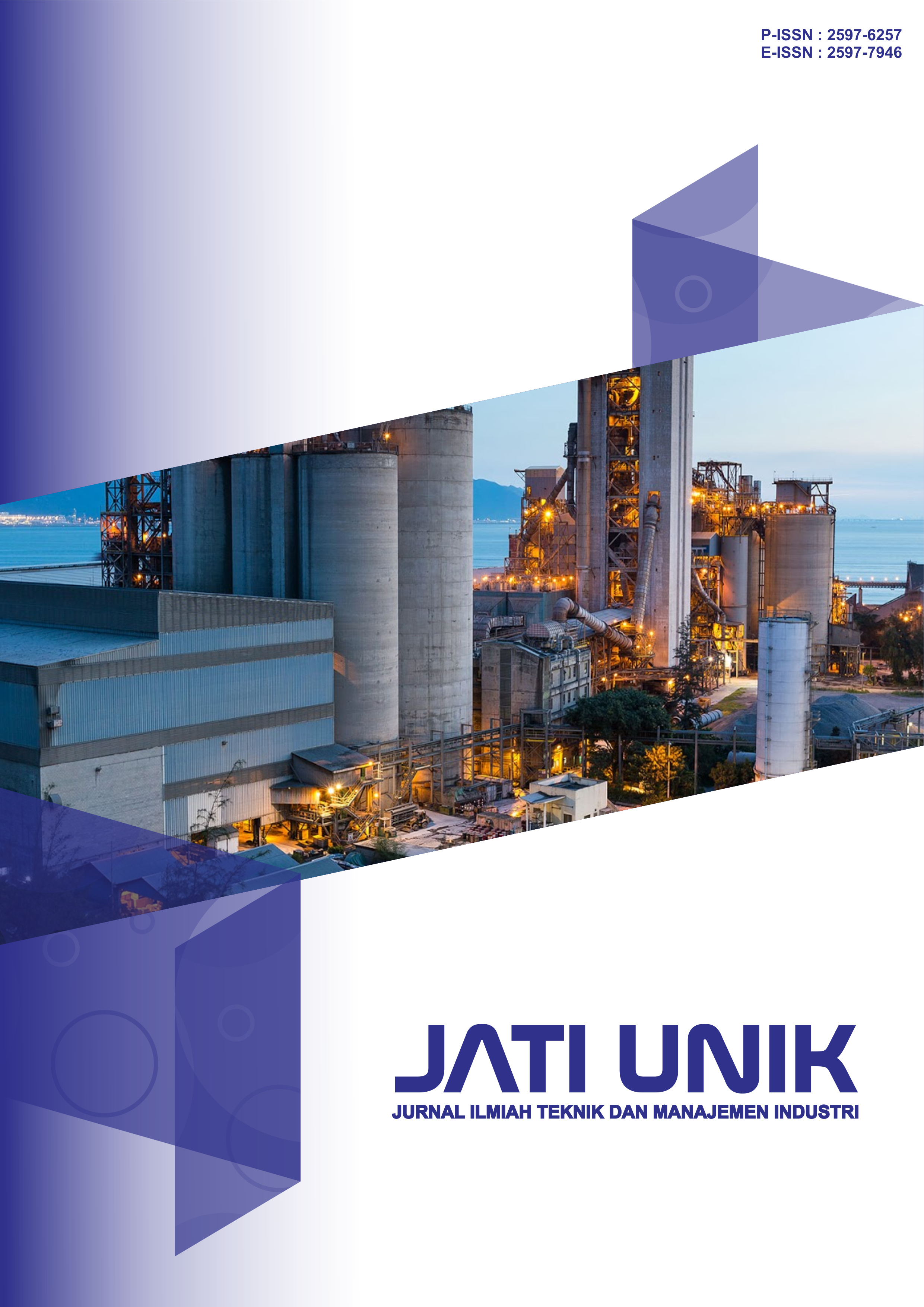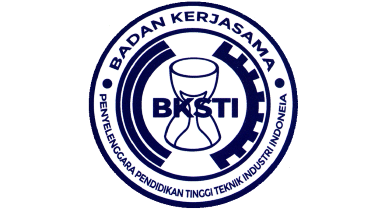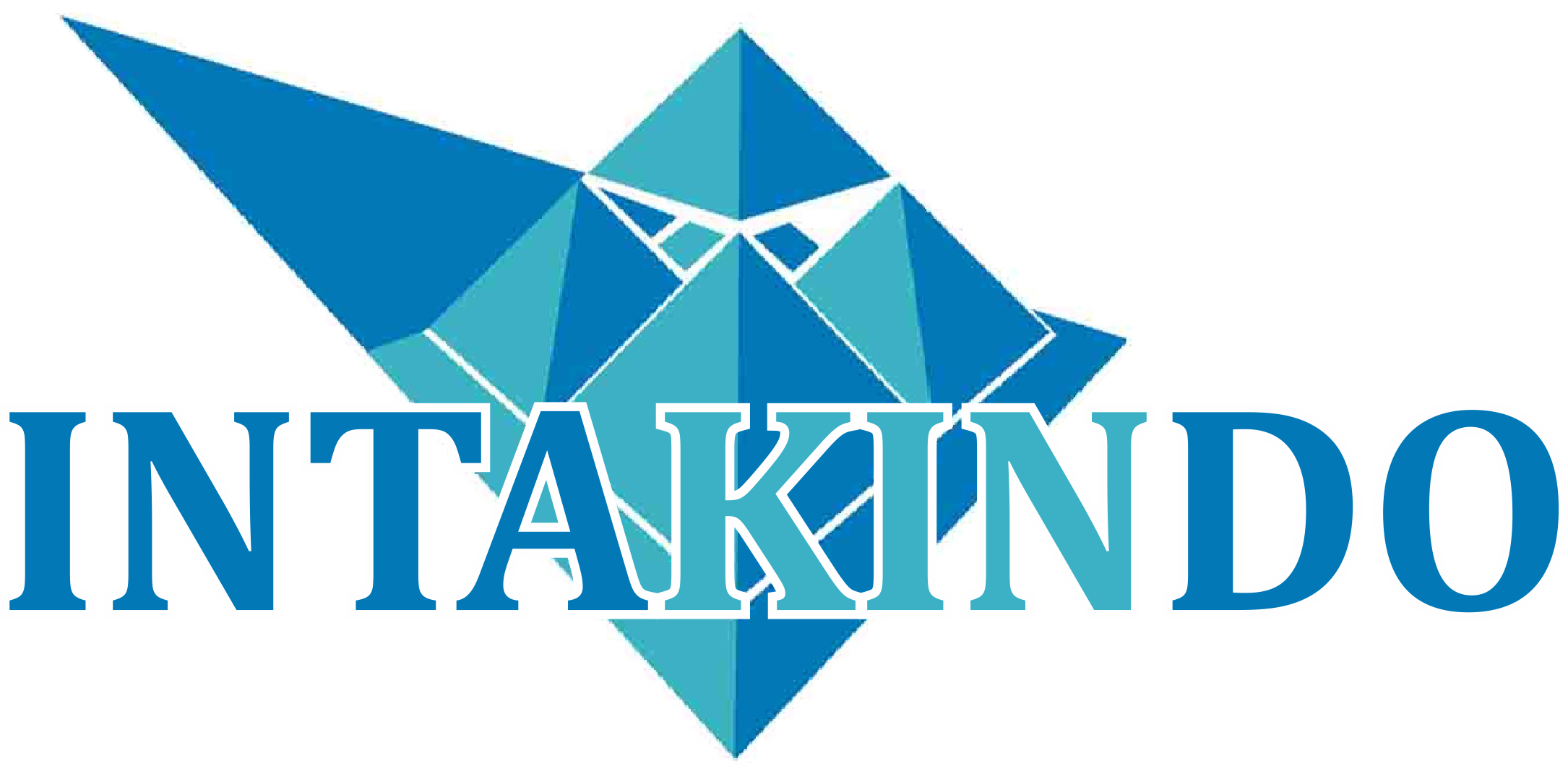Analisa Postur Kerja untuk Mengukur Risiko Cedera Dengan Metode Cornell Musculoskeletal Discomfort Questionnaires, Rapid Upper Limb Assessment dan Rapid Entire Body Assessment
DOI:
https://doi.org/10.30737/jatiunik.v7i2.5408Keywords:
CMDQ, RULA, REBA, Working postureAbstract
PT. XYZ is a company that focuses on providing construction materials such as ready mix concrete. The workforce is currently in decline due to the reduced prevalence of work behavior. The initial 1 hour produced 100m3 but the realization in the Company only produced 50m3. The purpose of this study was to measure the potential risk of musculoskeletal injury caused by non-ergonomic work postures. The methods used in this study are Cornell Musculoskeletal Discomfort Questionnaires (CMDQ), Rapid Upper Limb Assessment (RULA), Rapid Entire Body Assessment (REBA). This study found a significant relationship between the level of musculoskeletal discomfort obtained in respondents through CMDQ with ergonomic risk factors identified through RULA and REBA analysis. These can include poor body position, repetitive movements, or excessive workload. These findings could help in the development of theories regarding ergonomics and factors related to worker health and well-being.
References
A. A. Dermawan, A. E. Ridha, and D. A. Putera, “Analisis Angka Kecelakaan Kerja Dengan Metode Statistik Kecelakaan Kerja Di PT. XYZ,” JATI UNIK J. Ilm. Tek. dan Manaj. Ind., vol. 5, no. 2, pp. 125–133, 2022, doi: 10.30737/jatiunik.v5i2.2450. DOI: https://doi.org/10.30737/jatiunik.v5i2.2450
M. Imron, “Analisis Tingkat Ergonomi Postur Kerja Karyawan Di Laboratorium Kcp Pt. Steelindo Wahana Perkasa Dengan Metode Rapid Upper Limb Assessment (Rula), Rapid Entire Body Assessment (Reba) Dan Ovako Working Posture Analisys (Owas),” JITMI (Jurnal Ilm. Tek. dan Manaj. Ind., vol. 2, no. 2, p. 147, 2020, doi: 10.32493/jitmi.v2i2.y2019.p147-153. DOI: https://doi.org/10.32493/jitmi.v2i2.y2019.p147-153
Tarkawala, S. H. Bakri, and L. Sudiajeng, “Ergonomi untuk keselamatan, kesehatan kerja dan produktivitas,” pp. 1–23, 2016.
M. Yusuf, “Konsep Ergonomi Dalam Manajemen Perkantoran Pendidikan Islam: Menjaga Kesejahteraan Dan Produktivitas Karyawan,” J. Manaj. Pendidik. Islam, vol. 2, no. September, pp. 14–32, 2023.
I. Shalahuddin, I. Suhendar, and U. Sumarna, “Pendidikan Kesehatan Tentang Ergonomi Di Home Industry Cotton Bud Desa Mekarbakti Kecamatan Pamulihan Kabupaten Sumedang,” J. Kreat. Pengabdi. Kpd. Masy., vol. 4, no. 2, pp. 440–449, 2021, doi: 10.33024/jkpm.v4i2.3826. DOI: https://doi.org/10.33024/jkpm.v4i2.3826
N. A. Djaali and D. S. Fajriah, “Analisis Faktor Yang Berhubungan Dengan Postur Kerja Karyawan di Kantor Pusat PT Jasa Marga (Persero) Tbk,” J. Ilm. Kesehat., vol. 12, no. 2, pp. 159–168, 2020, doi: 10.37012/jik.v12i2.390. DOI: https://doi.org/10.37012/jik.v12i2.390
K. F. Salleh, S. M. Fadzil, and M. Y. M. Daud, “Cmdq, a Tool for Pain Sensation Solution for Ergonomic Postural Assessment During Practical Laboratory Work,” J. Teknol., vol. 84, no. 6–2, pp. 105–111, 2022, doi: 10.11113/jurnalteknologi.v84.19357. DOI: https://doi.org/10.11113/jurnalteknologi.v84.19357
Y. D. R. Montororing, “Perancangan Fasilitas Alat Bantu Kerja Dengan Prinsip Ergonomi Pada Bagian Penimbangan Di Pt. Bpi,” J. Inkofar, vol. 1, no. 2, pp. 47–57, 2021, doi: 10.46846/jurnalinkofar.v1i2.175. DOI: https://doi.org/10.46846/jurnalinkofar.v1i2.175
A. R. Sya’bana and D. Herwanto, “Analisis Postur Tubuh Menggunakan Metode RULA, REBA Pada Pekerja di Divisi Packaging,” J. Serambi Eng., vol. 8, no. 2, pp. 5909–5915, 2023, doi: 10.32672/jse.v8i2.5992. DOI: https://doi.org/10.32672/jse.v8i2.5992
S. Hignett and L. McAtamney, “Rapid Entire Body Assessment (REBA),” Appl. Ergon., vol. 31, no. 2, pp. 201–205, 2000, doi: 10.1016/S0003-6870(99)00039-3. DOI: https://doi.org/10.1016/S0003-6870(99)00039-3
S. Hartanti and M. P. Sari, “Analisis Perbaikan Postur Kerja dengan Cornell Musculoskeletal Discomfort Questionnaires (CMDQ) dan Metode Rapid Entire Body Assesment (REBA) Beban Fisik Pekerja Konstruksi (Studi Kasus: Pembangunan Jembatan Mlowo, Cs Nguter Sukoharjo),” Semin. Nas. Tek. dan Manaj. Ind., vol. 1, no. 1, pp. 160–166, 2021, doi: 10.28932/sentekmi2021.v1i1.72. DOI: https://doi.org/10.28932/sentekmi2021.v1i1.72
E. Fibrianie, M. Z. Rohman, and D. Cahyadi, “Analisis Kelelahan Pekerja Pengolah Kerupuk di Kota Bangun Kalimantan Timur,” JTT (Jurnal Teknol. Terpadu), vol. 7, no. 1, pp. 17–22, 2019, doi: 10.32487/jtt.v7i1.526. DOI: https://doi.org/10.32487/jtt.v7i1.526
P. Rachmawati, “Rancang Bangun Mesin Perajang Singkong yang Memenuhi Aspek Ergonomis untuk Meningkatkan Produktivitas Pekerja,” J. Engine Energi, Manufaktur, dan Mater., vol. 3, no. 2, pp. 66–72, 2019.
A. Yusof and M. S. N. Shahida, “Prevalence of Musculoskeletal Discomfort Among Workers in a Medical Manufacturing Facility,” Int. J. Automot. Mech. Eng., vol. 18, no. 2, pp. 8687–8694, 2021, doi: 10.15282/ijame.18.2.2021.06.0662. DOI: https://doi.org/10.15282/ijame.18.2.2021.06.0662
M. Kothapalli, “Prevalence of Self-Reported Work-related Musculoskeletal Symptoms among Software Employees in Hyderabad, India,” Int. J. Res. Rev., vol. 9, no. 1, pp. 69–73, 2022, doi: 10.52403/ijrr.20220111. DOI: https://doi.org/10.52403/ijrr.20220111
C. I. Erliana, Analisis Postur Kerja Dan Kelelahan Pada Pekerja, vol. 3, no. 1. 2021. DOI: https://doi.org/10.32524/saintek.v1i2.126
M. Omidi, M. Jalilian, M. Kazemi, M. Kamalvandi, M. Jamshidzad, and N. Kurd, “Using of Cornell measuring tool (Cornell musculoskeletal discomfort questionnaires) for assessment of the musculoskeletal disorders prevalence among Ilam teaching hospitals nurses: Cross-sectional study in 2016,” Ann. Trop. Med. Public Heal., vol. 10, no. 6, pp. 1587–1590, 2017, doi: 10.4103/ATMPH.ATMPH. DOI: https://doi.org/10.4103/ATMPH.ATMPH_619_17
K. F. Salleh, S. M. Fadzil, and M. Y. M. Daud, “CMDQ in Musculoskeletal Discomforts during welding lab work in technical education institution Khairul,” Korea Obs. J., vol. 52, no. 1, pp. 1–18, 2021, doi: 10.5281/zenodo.4718316.
A. T. Andriansyah and B. I. Putra, “Analisa Postur Kerja di PT . Karunia Selaras Abadi dengan Metode CMDQ ,” vol. 09, no. 02, pp. 182–194, 2023. DOI: https://doi.org/10.35308/jopt.v9i2.8450
V. Tiogana and N. Hartono, “Analisis Postur Kerja dengan Menggunakan REBA dan RULA di PT X,” J. Integr. Syst., vol. 3, no. 1, pp. 9–25, 2020, doi: 10.28932/jis.v3i1.2463. DOI: https://doi.org/10.28932/jis.v3i1.2463
: Erman Cakti, “Ergonomic Risk Assessment using Cornell Musculoskeletal Discomfort Questionnaire in a Grocery Store,” Ergon. Int. J., vol. 3, no. 6, 2019, doi: 10.23880/eoij-16000222. DOI: https://doi.org/10.23880/EOIJ-16000222
M. Ilham Adelino, T. Andra Salputra, N. Try Arnika, H. Hermanto, and Y. Yusrila, “Analisis Postur Kerja Mengurangi Musculoskeletal Disorders Menggunakan Metode RULA dan REBA Pada Bengkel Aryka Motor,” COMSERVA Indones. J. Community Serv. Dev., vol. 2, no. 10, pp. 2134–2141, 2023, doi: 10.59141/comserva.v2i10.617. DOI: https://doi.org/10.59141/comserva.v2i10.617
A. Setiorini, S. Musyarofah, Mushidah, and B. Widjasena, “Analisis Postur Kerja dengan Metode REBA dan Gambaran Keluhan Subjektif Musculoskeletal Disorders (MSDs). (Pada Pekerja Sentra Industri Tas Kendal Tahun 2017),” vol. 7621, no. 1, pp. 24–32, 2019. DOI: https://doi.org/10.23917/jk.v0i1.7669
I. D. Setyowati and B. I. Putra, “Workload Risk Analysis of the Optimal Packing Division Using RWL, REBA, and OCRA Methods on Musculoskeletal Disorders,” Procedia Eng. Life Sci., vol. 2, no. 2, 2022, doi: 10.21070/pels.v2i2.1327. DOI: https://doi.org/10.21070/pels.v2i2.1327
Downloads
Published
Issue
Section
License

This work is licensed under a Creative Commons Attribution-NonCommercial-NoDerivatives 4.0 International License.
Information regarding Copyright and Licensing at JATI UNIK as follows:
- Licensed Use of Non - Commercial Articles will be governed by the Creative Commons Attribution license, which is featured on the Creative Commons Attribution Non-Commercial Share A Like 4.0 International License.
- The author guarantees that the articles published through JATI UNIK are original and do not contain statements that violate the law do not violate others' rights are subject to copyright, which is held exclusively by the author and free from the rights of third parties. The author is allowed to quote from various sources used for research and not to harm any party.
- JATI UNIK disseminates articles published with the rules set by Creative Commons. UNIK JATI license allows users to copy, distribute, display, and work for non-commercial purposes. Users also need to connect authors and JATI UNIK with the distribution of articles in journals.
- The Author rights, namely copyrights, ownership rights, patents, rights to use the substance of articles in the future, rights to reproduce articles for personal purposes and not to be traded, rights to conduct personal archives, rights to contract used for the non-exclusive distribution of articles published in the form a book and acknowledge the initial publication of the article originating from JATI UNIK.
- Suppose articles published by the author through JATI UNIK are compiled with other authors. In that case, it is necessary to create a form containing the authority of all authors involved in the article's production by including the agreement agreed upon by all authors in the article.
- The next point is, the agreement can be terminated if the author or JATI UNIK violates the agreement and cannot make repairs to the customer within a maximum of 2 months after being given information asking for the violation to be corrected. If there is no violation of the agreement, the license will automatically terminate and affect UNIQUE JATI UNIK.
- Regarding royalties, so far, if it is following applicable legal regulations, the author will waive his right to collect royalties on articles that have been licensed by JATI UNIK.
- In publishing the article, the editorial process is successful. JATI UNIK will continue it. JATI UNIK has the right to adjust articles related to punctuation, spelling, capital letters, references used, and usage adapted to JATI UNIK. The author acknowledges that the article can be published and accessed free of charge by the public.
Deprecated: json_decode(): Passing null to parameter #1 ($json) of type string is deprecated in /home/ojs.unik-kediri.ac.id/public_html/plugins/generic/citations/CitationsPlugin.php on line 68















